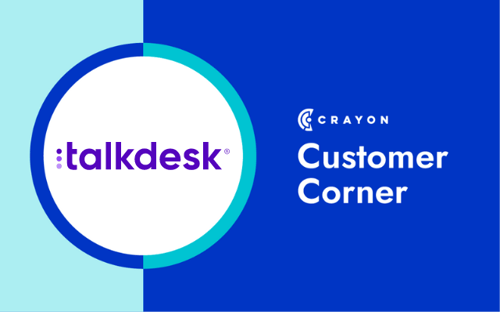Win/loss analysis is a critical component of competitive intelligence (CI). Understanding who you are winning (or losing) against and why helps inform how you position and differentiate yourself against the competition as well as what tactics to use in competitive deals. However, conducting a win/loss analysis is a resource-intensive undertaking—you have to gather qualitative feedback from different people across the organization, as well as customers and prospects. You then have to analyze quantitative data such as win rates, loss reasons, win/loss ratio, etc. These activities often lead to incredible insights, but the key to making these insights useful is making them actionable.
Instead of simply holding a meeting to show off your win/loss insights (though you should do that, too!), take the opportunity to make them actionable by deploying those insights into your sales battlecards. Because battlecards are highly tactical in nature, sales can leverage those insights immediately in prospect conversations to help knock a competitor out of a deal and ultimately win.
Here are three ways that win/loss insights can be implemented into your battlecards.
Win & Loss Stories
Sales reps love a good story. While other competitive features in battlecards such as strengths and weaknesses are important, putting a good narrative around beating the competition makes it real for the reps—it fires them up and makes them feel like they can effectively move a prospect away from a competitor. Featuring a “win” story in your battlecards will give reps practical advice on how to actually beat a competitor in a head-to-head deal.
However, not all stories can have a happy ending. Be sure to include loss stories alongside the win stories so reps can see the common, real-world pitfalls that they can run into when selling against a competitor.
Here are some tips for sharing win and loss stories in a battlecard:
- Keep it short: Reps don’t have time to read a novel when they are on a call. Short sentences and bulleted points are your friends.
- Break it down: Call out the key reasons why the sales rep won or lost against a competitor—simply saying, “John said our price was better and then we won/lost the deal” is not enough. List the key elements that led to a rep winning or losing the deal—how the rep positioned against the competitor, which product features were demoed, etc. Showing reps how competitive deals should be handled gives them the confidence to replicate successful tactics and avoid common pitfalls.
- Try a video: Have the winning rep—in their own words—record a video telling the story of their win. Embedding it right into the battlecard will ensure your reps find the video every time.
Loss Reasons
An effective way to understand why you’re losing competitive deals is to track specific reasons for losing a deal in your CRM. Meaning, every single time a rep has to “closed lost” a deal, they need to assign a reason for the loss. There should be a set list of reasons to choose from. Some common examples include lack of budget, not a current priority, non-responsive, etc. Implementing this process helps you track loss reasons over time at a macro-level, which you can then include in your battlecards to help reps steer deals away from a competitive loss.
For example, if a common reason for a competitive loss is that your competitor has far lower pricing, this section of your battlecard can include tips and soundbites on how to steer that conversation in a positive direction.
Rip-out Case Studies
When you interview customers for your win/loss analysis, make sure you speak to those customers who were former customers of your competitor. Why? Because winning the business of a competitor’s customer is the ultimate showcase of your strengths and value proposition.
Dedicate a section of your battlecards to detailing those rip-and-replace deals and highlight themes that can help reps in a competitive opportunity. This section should highlight the pain points the customer had with a competitor’s solution and how your solution was able to alleviate that pain.
Win/Loss Insights: Your Secret Weapon for Winning Competitive Deals
While we’ve talked about using win/loss insights specifically for battlecards, there are actually many potential applications of these insights in the context of competitive intelligence. Here are some other ways you can use win/loss insights to help the organization:
-
- Competitor profiles: Competitor profiles are an educational deep-dive into a specific competitor, as opposed to a battlecard, which is meant to be a tactical selling tool. Including win/loss insights into a profile allows you to elaborate on why you win/lose against a competitor, whereas that kind of deep-dive would be too long for a battlecard.
-
- Sales training: Sales loves to learn about what the competition is doing and how they can beat them. Setting aside time to present your insights to the team will go a long way in educating sales about how to effectively sell against a competitor.
- Executive round-ups: The C-Suite is a key stakeholder in competitive intelligence, but they don’t need every single detail. A high-level overview of your win/loss insights will keep execs in-the-know and potentially inform their thinking on other strategic initiatives.
-
- Marketing campaigns: Marketing can optimize or launch campaigns that address obstacles that lead to competitive losses. They can also run campaigns to target competitor weaknesses that come up through win/loss analysis.
-
- Product improvements: The product team can take win/loss insights and focus on product improvements that will help win deals that were previously limited by product functionality.
Whether you conduct win/loss analysis quarterly, bi-annually, or even annually—make sure to make the most out of your analysis by applying insights to your battlecards and additional competitive assets.

Related Blog Posts
Popular Posts
-
 The 8 Free Market Research Tools and Resources You Need to Know
The 8 Free Market Research Tools and Resources You Need to Know
-
 How to Measure Product Launch Success: 12 KPIs You Should Be Tracking
How to Measure Product Launch Success: 12 KPIs You Should Be Tracking
-
 24 Questions to Consider for Your Next SWOT Analysis
24 Questions to Consider for Your Next SWOT Analysis
-
 How to Create a Competitive Matrix (Step-by-Step Guide With Examples + Free Templates)
How to Create a Competitive Matrix (Step-by-Step Guide With Examples + Free Templates)
-
 6 Competitive Advantage Examples From the Real World
6 Competitive Advantage Examples From the Real World





